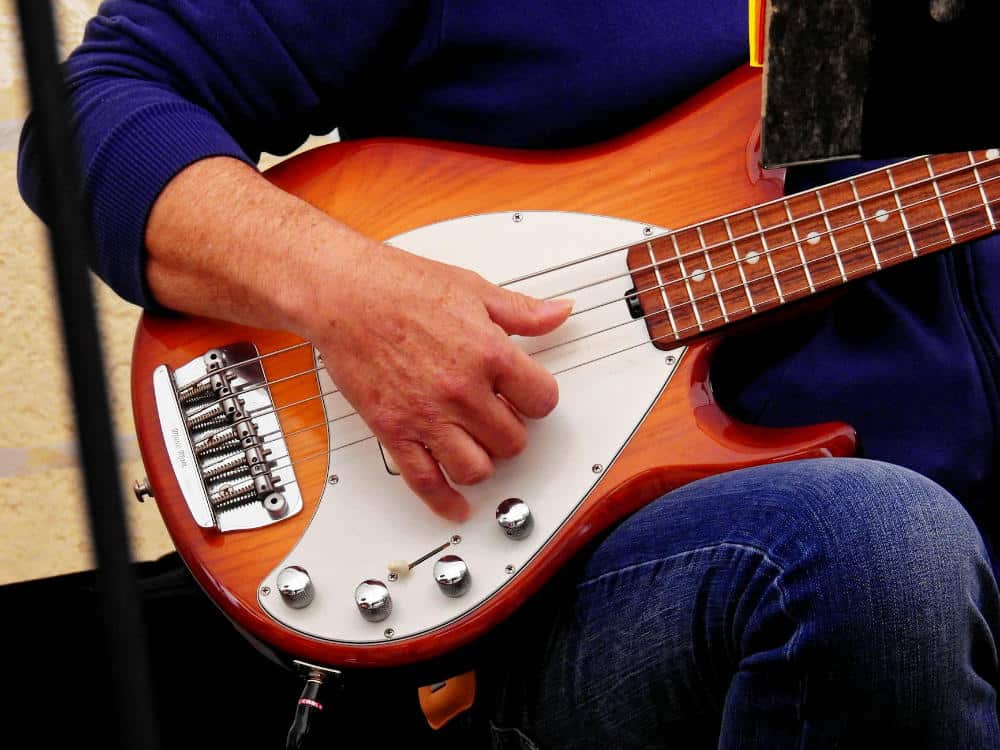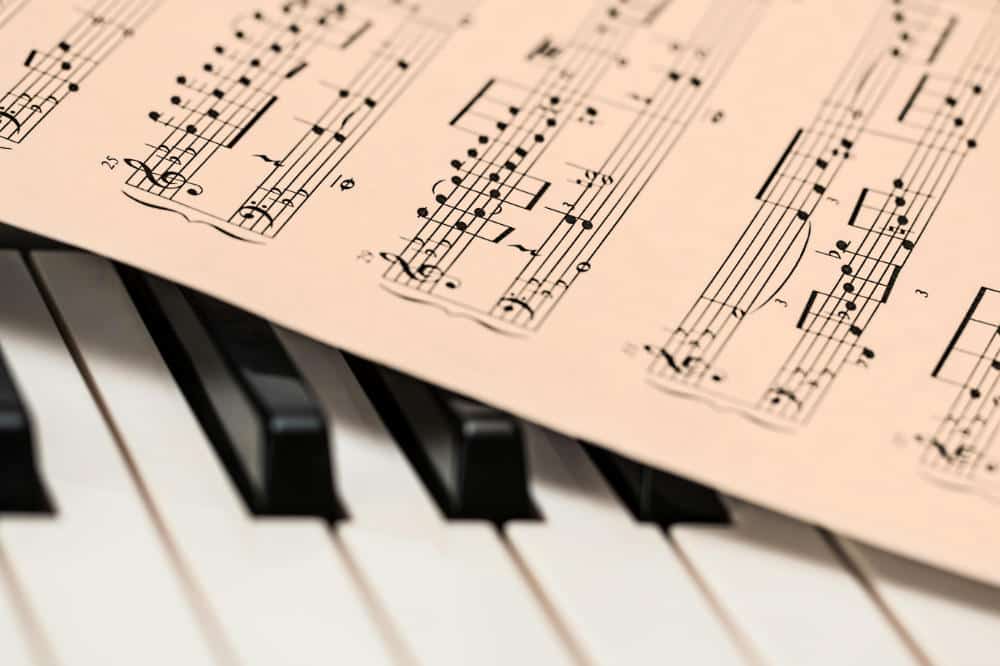Estimated reading time: 10 minutes
Have you ever felt the thump in your chest at a concert or the deep rumble that seems to move through your entire body when listening to your favorite song? That’s the power of bass in music! 🎵 Often overlooked but always essential, bass forms the backbone of virtually every musical genre, from classical to rock, jazz to electronic dance music.
But what exactly is bass, and why is it so crucial? Whether you’re a music enthusiast, an aspiring musician, or simply curious about the inner workings of your favorite tunes, understanding bass can revolutionize your listening experience. It’s not just about the low notes; it’s about rhythm, harmony, and the very foundation of music itself.
In this deep dive into the world of bass, we’ll explore everything from its definition and role to the various instruments that bring those low frequencies to life. We’ll journey through different music genres, uncover technical aspects, and trace the fascinating evolution of bass in music history. Get ready to discover why bass is the unsung hero of the musical world!

Table of contents
Definition and Role of Bass in Music
What constitutes bass in music
Bass in music refers to the lower frequencies of sound, typically ranging from 20 Hz to 300 Hz. It forms the foundation of musical compositions, providing depth and richness to the overall sound. Bass can be produced by various instruments, including:
- Bass guitar
- Double bass
- Synthesizers
- Drums (particularly the kick drum)
Importance of bass in musical composition
Bass plays a crucial role in musical composition for several reasons:
- Harmonic foundation
- Rhythmic stability
- Emotional impact
- Sonic balance
| Aspect | Contribution |
|---|---|
| Harmony | Establishes the root notes of chords |
| Rhythm | Provides a steady pulse and groove |
| Emotion | Adds depth and power to the music |
| Balance | Complements higher frequencies |
How bass affects rhythm and harmony
Bass significantly influences both rhythm and harmony in music:
- Rhythm: Bass instruments often play on the downbeats, establishing the pulse of the music. This creates a solid rhythmic foundation for other instruments to build upon.
- Harmony: By outlining the chord progressions, bass notes define the harmonic structure of a piece. This helps listeners understand the tonal center and harmonic movement.
The interplay between bass and other elements in music creates a cohesive and engaging listening experience, making it an essential component of musical composition across various genres.

Types of Bass Instruments
Now that we understand the definition and role of bass in music, let’s explore the various types of bass instruments that bring depth and rhythm to our favorite tunes.
A. Electric bass guitar
The electric bass guitar is the most common bass instrument in modern music. It typically has four strings and is played with fingers or a pick. Here are some key features:
- Solid body construction
- Fretted or fretless neck
- Amplified sound
- Versatile for many genres
B. Double bass (upright bass)
The double bass, also known as the upright bass, is a large stringed instrument used in classical, jazz, and folk music. Its characteristics include:
- Played standing up or sitting on a high stool
- Typically has four strings
- Produces a deep, rich tone
- Often played with a bow (arco) or plucked (pizzicato)
C. Synthesized bass
Synthesized bass is created electronically and offers a wide range of sounds. It’s popular in electronic, pop, and hip-hop music. Key aspects include:
- Produced by synthesizers or digital audio workstations
- Highly customizable sound
- Can mimic acoustic bass or create unique tones
- Often used in electronic dance music (EDM)
D. Other bass instruments
While less common, these instruments also contribute to the bass section in various musical styles:
| Instrument | Description | Common Genres |
|---|---|---|
| Bass trombone | Lowest-pitched member of the trombone family | Classical, jazz |
| Tuba | Largest and lowest-pitched brass instrument | Classical, marching bands |
| Bass clarinet | Lower-pitched member of the clarinet family | Classical, jazz |
| Bassoon | Double-reed woodwind instrument | Classical, orchestral |
These diverse bass instruments offer musicians a wide range of options to create the foundation of music across different genres and styles. Next, we’ll explore how bass is utilized in various music genres, showcasing its versatility and importance in shaping the sound of different musical styles.

Bass in Different Music Genres
The bass plays a crucial role across various music genres, adapting its sound and function to suit the style’s unique characteristics. Let’s explore how bass is utilized in different musical contexts:
A. Rock and Pop
In rock and pop music, the bass guitar often forms the backbone of the rhythm section. It provides a solid foundation for the song’s harmony and rhythm, working closely with the drums to create a groove. The bass line can be simple and repetitive or complex and melodic, depending on the song’s style.
B. Jazz and Blues
Jazz and blues bass players typically use upright (double) bass or electric bass guitar. In these genres, the bass often takes on a more melodic role, engaging in “walking” bass lines or improvised solos. The interaction between bass and other instruments is crucial in creating the characteristic swing and feel of jazz and blues.
C. Electronic Dance Music (EDM)
EDM relies heavily on synthesized bass sounds, often referred to as “bass drops” or “sub-bass.” These deep, powerful bass tones are essential in creating the genre’s signature energy and driving rhythm.
D. Classical Music
In classical music, the bass section typically consists of double basses and cellos. These instruments provide harmonic support and add depth to the orchestra’s sound. The bass line in classical music is often more subtle but no less important in creating a rich, full-bodied sound.
E. Hip-hop and R&B
Hip-hop and R&B frequently feature prominent bass lines, often created using synthesizers or sampled from other recordings. The bass in these genres is typically deep and resonant, contributing significantly to the music’s rhythm and overall feel.
| Genre | Primary Bass Instrument | Typical Role |
|---|---|---|
| Rock/Pop | Electric bass guitar | Rhythmic foundation |
| Jazz/Blues | Upright or electric bass | Melodic, walking bass lines |
| EDM | Synthesized bass | Powerful, driving rhythm |
| Classical | Double bass, cello | Harmonic support |
| Hip-hop/R&B | Synthesized or sampled bass | Deep, resonant rhythm |
Now that we’ve explored how bass functions in various genres, let’s delve into the technical aspects of bass production and performance.

Technical Aspects of Bass
Frequency Range of Bass Sounds
Bass frequencies typically range from 20 Hz to 300 Hz, with the fundamental frequencies of most bass instruments falling between 40 Hz and 200 Hz. This low-end spectrum is crucial for providing the foundation and depth in music.
| Frequency Range | Description |
|---|---|
| 20-60 Hz | Sub-bass, felt more than heard |
| 60-150 Hz | Low bass, provides warmth and fullness |
| 150-300 Hz | Upper bass, adds definition and punch |
Bass Amplification and Equipment
Bass amplification requires specialized equipment to accurately reproduce low frequencies. Essential components include:
- Bass amplifier (head)
- Speaker cabinet with large drivers
- Effects pedals for tone shaping
- High-quality cables to minimize signal loss
Playing Techniques for Bass Instruments
Bass players employ various techniques to create different sounds and rhythms:
- Fingerstyle: Using index and middle fingers alternately
- Slap and pop: Striking strings with thumb and pulling with fingers
- Pick playing: Using a plectrum for a more aggressive tone
- Tapping: Using both hands on the fretboard for complex patterns
Understanding these technical aspects is crucial for bassists to develop their skills and create a solid foundation in any musical composition. The choice of equipment and playing technique significantly impacts the overall sound and feel of the music.

The Evolution of Bass in Music
The bass has undergone a remarkable transformation throughout music history, shaping the sound and rhythm of various genres. Let’s explore its evolution, from traditional instruments to modern technologies and iconic players.
Historical development of bass instruments
The journey of bass instruments spans centuries, with each era contributing to its evolution:
- Ancient times: Primitive bass instruments like drums and gourds
- Middle Ages: Introduction of the viol family
- Renaissance: Development of the viola da gamba
- Baroque era: Emergence of the double bass
- 19th century: Invention of the bass guitar
Technological advancements in bass production
Technology has revolutionized bass production, enhancing sound quality and expanding creative possibilities:
| Advancement | Impact |
|---|---|
| Electric bass | Increased volume and versatility |
| Synthesizers | Introduced new bass tones and textures |
| Digital audio workstations | Enabled precise editing and manipulation |
| Amp modeling | Simulated various bass amplifier sounds |
| Bass effects pedals | Added diverse tonal options |
Influential bass players throughout history
Many talented musicians have left their mark on bass playing, inspiring generations of players:
- James Jamerson: Motown’s unsung hero
- Jaco Pastorius: Jazz fusion pioneer
- Flea: Red Hot Chili Peppers’ funk-rock innovator
- Carol Kaye: Prolific session musician
- Victor Wooten: Virtuosic technique and innovation
These bassists, among others, have pushed the boundaries of what’s possible with the instrument, contributing to its ongoing evolution in music.
Video: The Role of the Bass in Music
Conclusion

Bass serves as the foundation of music, providing rhythm, harmony, and depth to compositions across various genres. From the deep tones of the double bass to the electronic pulses of synthesizers, bass instruments play a crucial role in shaping the overall sound and feel of a song. Throughout music history, the bass has evolved from its traditional acoustic roots to incorporate electric and digital innovations, expanding its versatility and impact.
Understanding the importance of bass in music enhances our appreciation of the art form. Whether you’re a musician, producer, or simply a music enthusiast, recognizing the role of bass can deepen your connection to the music you love. As you listen to your favorite songs, pay attention to the bass lines and how they contribute to the overall musical experience. By doing so, you’ll gain a new perspective on the intricate layers that make up the rich tapestry of sound in modern music.
Related Posts
FAQs
Bass refers to the lower range of musical sounds, typically between 20 Hz and 300 Hz. It forms the foundation of most compositions, adding depth and richness to the sound. Bass is crucial in providing rhythm, harmony, and emotional impact across various music genres.
Bass is essential because it creates a harmonic foundation, provides rhythmic stability, and adds emotional depth to music. By outlining the chord progressions and setting the groove, it complements higher frequencies and balances the overall sound, ensuring a cohesive musical experience.
Common bass instruments include the electric bass guitar, double bass (upright bass), and synthesized bass. Each instrument plays a unique role in different genres, from rock and pop to jazz and electronic music, offering versatility in creating low-end sounds.
In rock and pop, bass provides rhythmic support, while in jazz and blues, it often has a melodic role. In electronic music, synthesized bass delivers powerful, driving rhythms, while in classical music, bass adds harmonic depth using instruments like the double bass and cello.
Bass frequencies range from 20 Hz to 300 Hz, with specialized equipment like amplifiers and large speaker cabinets used to reproduce low frequencies. Various playing techniques, such as fingerstyle, slapping, and using effects pedals, shape the sound and tone of the bass.
